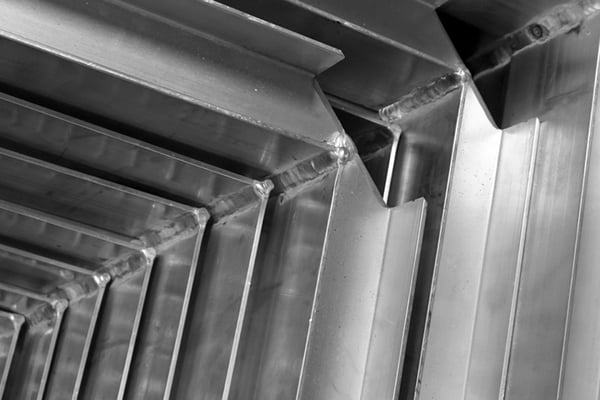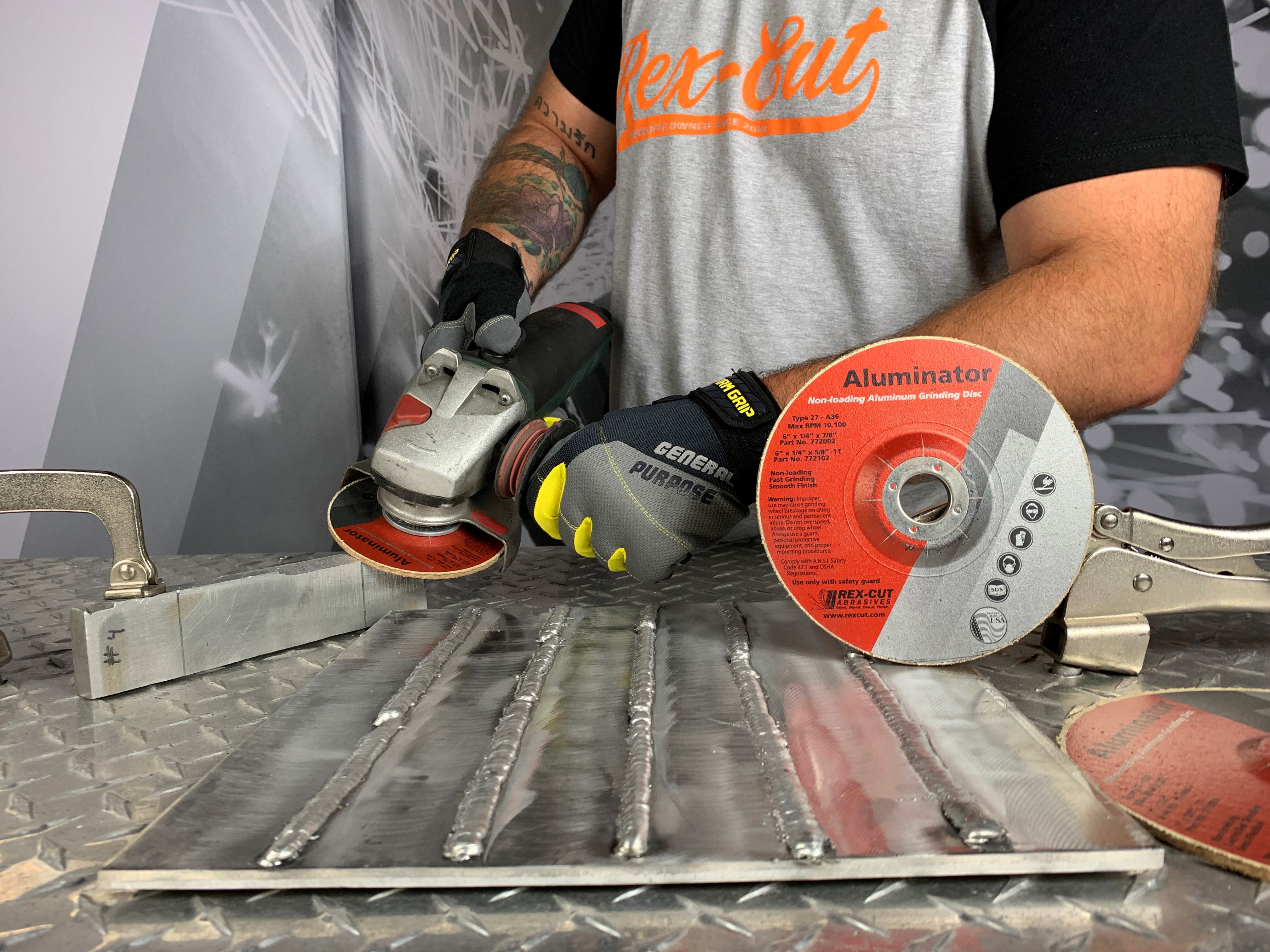Aluminum is fast becoming a sought after metal for marine and automotive applications due to its durability and weight. Not only is aluminum good for the environment (being 100 percent recyclable), the natural protection layer it spontaneously produces ensures that aluminum components are resistant to corrosion in salt water.
Aluminum carries a reputation of being hard to work with, but that’s not the entire story. Read on to find out the key elements every fabricator should know when working with aluminum and how you can use it for a competitive advantage.

The Good, the Bad and the Ugly of Aluminum Fabrication
Working with aluminum can be an excellent choice for fabricators looking to keep costs low, ensure a material that is easy to acquire, and keep the product both cosmetically appealing and functional for longer durations in extreme conditions.
The Good: Three Amazing Benefits of Aluminum
- Corrosion resistance: Aluminum naturally creates a barrier layer of oxide to prevent further oxidation
Read more about this incredible natural quality of aluminum in this article on Corrosion Resistance. - High strength-to-weight ratio: Aluminum is excellent for fabricating elements of automotive or marine applications because of its incredible strength for the weight
Aluminum alloys create even stronger metals with the weight and corrosion resistance benefits of aluminum. - High electrical conductivity: Aluminum has one of the highest electrical conductivity ratings of commonly used metals
With a conductivity rating of 3.5×107 σ(S/m) at 20°C, Aluminum’s conductivity rates close to gold, silver, and copper’s ease of energy transfer.
In addition to these three useful properties of aluminum, you can rest assured that it is also a sustainable material that is 100 percent recyclable.
The Bad: Welding Burnthrough
- PROBLEM: Welding burnthrough happens when the voltage or speed are not in the sweet spot that aluminum welding requires.
- SOLUTIONS: The main trick to keep in mind with aluminum welding is that it is much more sensitive to heat and speed than steel. A couple of ways to mitigate this are:
- Read and follow recommended guidelines for GMAW best practices, including:
- Base-metal preparation
- The push technique
- Power source selection
- Use this visual troubleshooting guide by Miller Welding to discern the source of the issue:
- Did you push too quickly or too slowly?
- Did you use enough heat or overheat the metal?
While a common issue, welding burn through on aluminum is preventable with the proper planning and adoption of best practices in your shop.
The Ugly: Aluminum Buildup on the Grinding Wheel
- PROBLEM: Aluminum’s low melting temperature can cause the material to coat the wheel during grinding creating a mess and need for additional materials to keep the wheel from aluminum buildup
- SOLUTIONS: There are a couple of common solutions to aluminum buildup on grinding wheels
- Some fabricators use waxes or pastes to stop grinding wheels from loading up on aluminum.While this solution does work, it costs extra in materials and time to coat the wheel. In addition, if you are beveling the metal to prepare the surface for a weld, that wax must be removed before you begin welding. Or if you are grinding and blending out a weld, you will want the finished surface clean of the residue.
- A naturally non-loading wheel, like Rex-Cut’s Type 27 Max Flex Wheels, allows for optimum control and a consistent finish, without the hassle of wheel-coating. See one in action here.

How to Make Aluminum Your Secret Weapon
Due to aluminum’s reputation in the fabrication world, many companies shy away from using this incredibly beneficial and cost-saving material in applications for lack of 1) knowledge of the aluminum’s propertiesand 2) the right tools to work well with it.
The most important aspect of incorporating aluminum into your fabrication arsenal is understanding the metal’s particularities:
- When welding with aluminum and aluminum alloys you need to know the particular temperatures and speeds for welding, as well as best practices and the best tools that pair with the material
- You have to keep in mind that it is a highly-conductive and low-melting point material and plan accordingly
The challenges of working with aluminum pale in comparison to its natural corrosion resistance, high strength-to-weight ratio and electrical conductivity.
Make sure to review this article regularly to ensure you are implementing best practices for working with aluminum to make your company at the cutting edge of fabrication practices.
Looking for more information on Aluminum?
